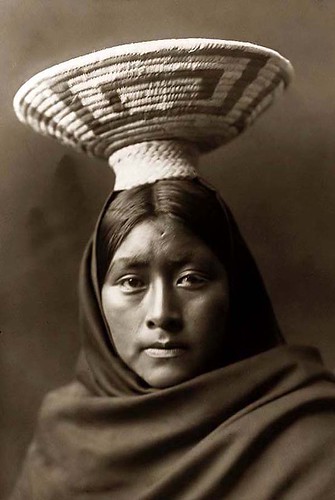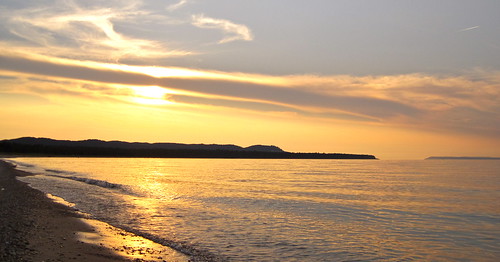Conferring with the Sun

This post was written in preparation for our May 2017 concert, Music Speaks
In our 2017 spring concert,
Manitou Winds explores the meandering, mystical path connecting music and words.
Words were created to communicate. Whether spoken or written, we need words to translate, convey, and make sense of our own experiences. Still, words are powerful but limited; they can tell us about an experience, but words themselves are not an experience.
Over the past few weeks, we’ve examined how music embodies its own wordless language of storytelling through sound and its interaction with our personal memories or daydreams. When music and words unite, however, a bit of transformation occurs. You might say music has the ability to transform words, briefly, into an experience.
Sun Songs by Jenni Brandon (b. 1977) collects sacred poetry from three different Native American tribes, examining their beautiful and harmonious relationship with the earth. The work — a seamless song cycle containing three songs — is written for soprano, English horn, cello, and piano and demonstrates Jenni’s transcendent flair for “tone painting”. I contacted Jenni, recently, and she graciously told me more about these texts, their significance, and how she chose them.
Many of Jenni’s works are directly inspired by nature or our interactions with it. “I had recently gotten a book of Native American prose and poetry (The Winged Serpent),” Jenni explains. “The book inspired me to look deeper into the lives of Native American people. Theirs was and is collection of cultures that honors the earth, sun, sky — all of nature. The idea of telling a story from their perspective (in a modern art song) really appealed to me.”
I. Song to bring fair weather
You, whose day it is, make it beautiful.
Get out your rainbow colors.
So it will be beautiful.— translated by Frances Densmore (1867-1957)
from Nootka and Quileute Music
Jenni assembled texts from three different Native American tribes, choosing their relationship with the sun as her focal point for telling a story. “I was interested in telling a story of the sun – of their respect for it and the Earth, and the notion of honoring the land,” says Jenni. “Even though these tribes were far apart (geographically) and maybe never crossed paths, I think it’s powerful that their conception of the sun and their honoring of the sun and nature is so similar. It’s a recognition that distance and time may separate us, but our feelings about the land and our love of it are often the same, even today.”
II. Song to pull down the clouds
At the edge of the world
It is growing light.
Up rears the light.
Just yonder the day dawns.
Spreading over the night.— translated by Ruth Underhill (1883-1984)
from Singing for Power
Understandably, some modern ethnomusicologists dismiss the works of early anthropologists and musicologists. On the surface, it can appear many of those early scholars sought to define native music using western terminology, forcing it into standard forms and categories rather than studying it and documenting it in its organic state.
 As pioneers in their field, however, they simply lacked the extensive knowledge of worldwide ancient cultures and the flexible musical lexicon that evolved in the decades following their discoveries. In truth, pioneers such as Frances Denmore, Ruth Underhill, and Leslie Spier are largely responsible for the survival of the often extant information we have about many Native American tribes which had already begun to vanish in the late 1800s and early 1900s.
As pioneers in their field, however, they simply lacked the extensive knowledge of worldwide ancient cultures and the flexible musical lexicon that evolved in the decades following their discoveries. In truth, pioneers such as Frances Denmore, Ruth Underhill, and Leslie Spier are largely responsible for the survival of the often extant information we have about many Native American tribes which had already begun to vanish in the late 1800s and early 1900s.
What early scholars clearly understood and emphasized was that song had an important place in many Native American cultures. Their cultural practices combined words and music in ways that extended well beyond our fairly simplistic modern labels of secular and sacred.
III. A Prayer
Sun, my relative
Be good coming out
Do something good for us.Make me work,
So I can do anything in the garden
I hoe, I plant corn, I irrigate.You, sun, be good going down at sunset
We lay down to sleep I want to feel good.While I sleep you come up.
Go on your course many times.
Make good things for us.Make me always the same as I am now.
— translated by Leslie Spier (1893-1961)
from Havasupai Enthography
Not only bridging miles by bringing together the poetry of these three unique tribes, Jenni seamlessly combined their songs into an uninterrupted journey from dramatic daybreak to dusk. From the first note to the last, there is no significant break or pause in the work. The voices of the native poets blend into one another.
Jenni says she often likes to tell a single coherent story by combining different texts and then using the common themes within each to link them together as a whole.
“There’s one line that really makes me feel these texts were meant to be together: ‘Make me always the same as I am now.’ The author talks of wanting to ‘feel good’, and I think of the feeling  many of us get at a sunrise or sunset – the feeling of infinite possibility, that everything is going to be okay. I think this line captures the spirit of the work, and — to me — brings sunlight into what can be a dark and angry world. If we hold onto this good feeling, this sense of loving the land — finding the goodness in a sunrise/sunset — then we will do what we need to do in order to keep that feeling alive, to make us the same in that moment of happiness, even when times are hard and challenging.”
many of us get at a sunrise or sunset – the feeling of infinite possibility, that everything is going to be okay. I think this line captures the spirit of the work, and — to me — brings sunlight into what can be a dark and angry world. If we hold onto this good feeling, this sense of loving the land — finding the goodness in a sunrise/sunset — then we will do what we need to do in order to keep that feeling alive, to make us the same in that moment of happiness, even when times are hard and challenging.”
While studying the English horn part and rehearsing and discussing this enthralling chamber work with our special guests (Emily Curtin Culler, soprano, Jean Coonrod, cello, and Susan Snyder, piano), I’ve noticed that same line has stood out as significant for me as well. Colored by Jenni’s musical framing while still maintaining its pure word form, the line becomes an elemental statement of both gratitude and hope. What better way to express both simultaneously than to wish a feeling or moment would never end?
In this unique combination of timbres which melds together in stunning warmth and remarkable expressiveness, Jenni Brandon has transformed simple but sacred words into a profound experience. We invite you to join us as we follow the sun on its journey from daybreak to dusk.
Image/Photo Credits
1. Rogers Road, © 2016 by Margie Guyot (Manitou Winds 2017 collaborating artist).
2. Bella Coola Sun Mask, Nootka mask art, Nitinaht Lake, British Columbia. (Nancy Sue & Judson C. Ball Collection of Native American Art).
3. Sunrise Over East Traverse Bay, © 2011 by J.T. McKinney.
4. Ceremony Sun Dance, original artwork by David Joaquin of Two Hawk Studio. (Quote by Ruth Underhill, Singing for Power: The Song Magic of the Papago Indians, © 1938 by University of Arizona Press).
5. Tohono O’odham (Papago) Woman, © 1907 by Edward S. Curtis.
6. Sunset at Pyramid Point, © 2016 by James Deaton.
7. Sunset on Good Harbor Bay, © 2012 by J.T. McKinney.



